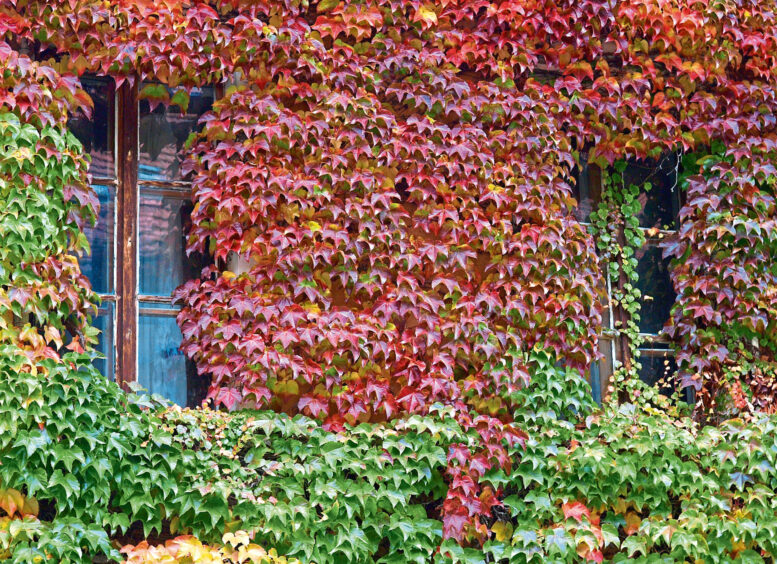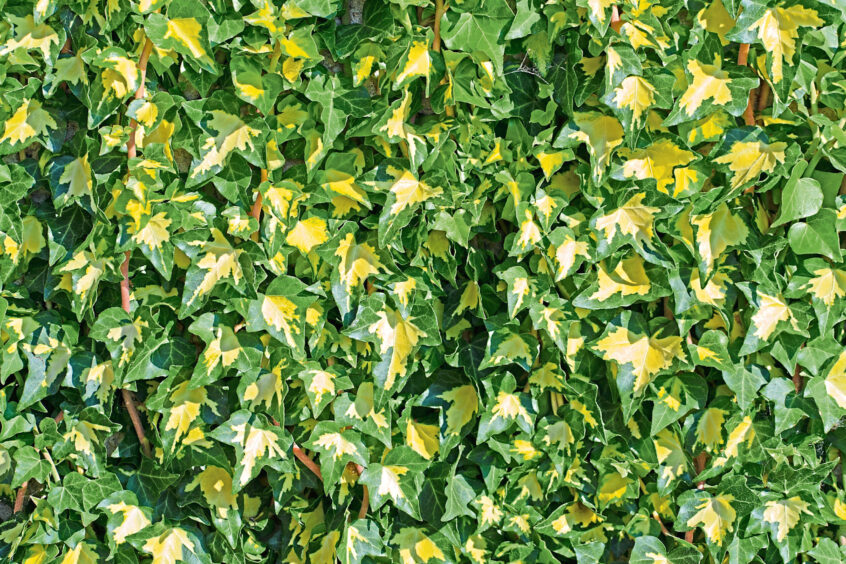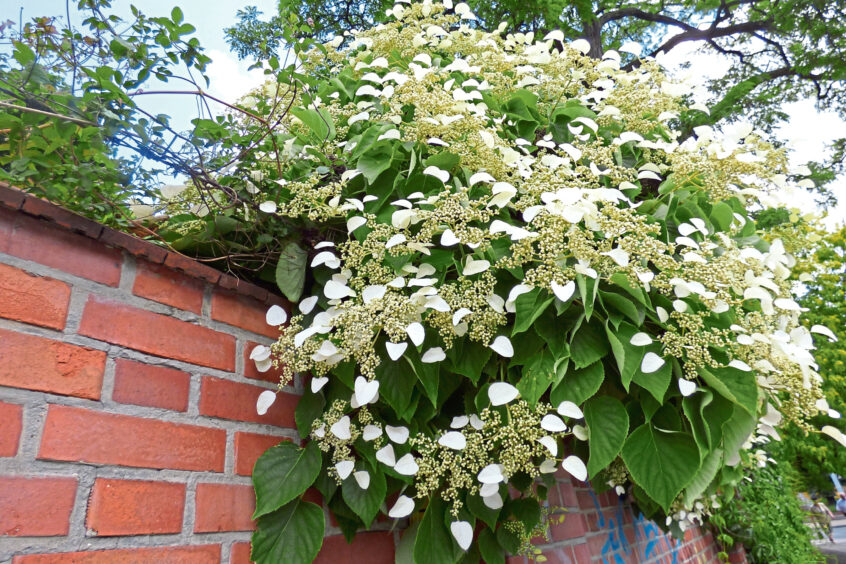A favourite sight at this time of year is seeing walls and buildings clothed with Boston Ivy, its foliage turning scarlet as this climbing plant presents us with its glorious autumn display.
This is a fantastic self-clinging vine, ideal for buildings up to 65ft tall. I guess this ultimate height isn’t necessary for the vast majority of our homes, so for our average-sized homes you may want to consider the Virginia creeper that only really climbs to 50ft.
They are both quite similar in appearance but can be separated by studying the number of lobes on its leaves combined with an understanding of its Latin name.
The latter of the two plants named there is parthenocissus (the plant genus) tricuspidata (species) – the species part of the name referring to the foliage meaning “three pointed”, while the former is P.quinquefolia, this time the species describing its five leaves.
The downside of both is that they are vigorous in their growth, becoming more than a nuisance if not kept in check.
It’s worth the effort
In my view they are well worth the time spent giving them an annual pruning during winter, though the last few years I’ve been carrying this out in late summer.
I just love how well the lines of neat pruning cuts look around the doors, windows and below the roof when this plant is in the peak of its display at this time of year.
They both attach themselves to walls by tendrils that twine or have suckers.
Climbers can often get a bad press, getting the blame for damaging walls but mostly this will only happen if the brickwork and mortar is in poor condition in the first place. In this case the roots of our own familiar ivy can penetrate this weakness, resulting in damage.
Why climbers are also good
I like to focus on the positive that climbing plants not only brighten the walls of our homes but can also make them more energy efficient, keeping them warmer in winter and cooler in summer.
Also providing food and shelter for wildlife, we now have so many good reasons for us gardeners to grow a climbing plant or two.
Very few of us garden in perfect soil, aspect or climatic conditions, so with much relief even in the toughest of spots there’s always a plant or two willing and able to help us out.
North-facing gardens can often be the most challenging, being cold and damp with poor light levels.
Thankfully we have plants like the Virginia creeper and Boston Ivy that are able to grow in such places.
Another I would recommend for such a place, one of my favourite and reliable plants, is the climbing hydrangea, H.petiolaris.
Also clinging to walls by the way of aerial roots, producing flattened clusters of white florets in late spring/early summer, with the added bonus of its dark green leaves colouring to yellow in autumn.
Looks like we have another addition for my Top Plants for the Tight Scot book!
It’s no coincidence that as gardeners we have learned to use these plants as climbers covering walls and hiding eyesores, as the plant hunters who introduced them to our gardens would have observed and noted them doing this in their natural habitat.
After reading an article on the flora found in the woods of Japan I’ve always fancied growing a climbing hydrangea up and through a tree.
To be honest this is something more for experimenting with on a tree at my work, but I do reckon it’ll make an interesting feature in the right place.
It’s not just the flowers
Depending on how shaded your spot is, there is a chance the climbing plant you choose may only flower at the very top where the sunlight can reach.
That may be unfortunate but the fact both of these are also good foliage plants means we don’t just have to rely on them flowering for us to get any interest.
I feel like I need to finish by saying something positive about the ivy we know and really should love.
They are robust plants able to grow in tough conditions and being evergreen will add interest during the lean winter months.
First they reach for the sky
Ivy produce nectar-rich flowers but really we grow for the green and more so variegated foliage coming in splashes of silver, white and an attractive yellow such as the variety Goldheart.
Once planted they have a fascinating two phases of growth. During their younger years it’s all about heading to the sky and they won’t start spreading horizontally until after around 10 years, once they’ve reached the adult stage.
As well as growing vertically, large-leaved varieties of ivy also make good ground cover.
The wonderful Cambo Gardens on the east coast of Fife have a novel way of keeping the growth on the floor of their woodlands in check.
If left alone the ivy would smother out the winter snowdrop display but thankfully they have two pet pigs as members of their garden team that head in to the woodlands to clear the ivy ever year. I wonder…













